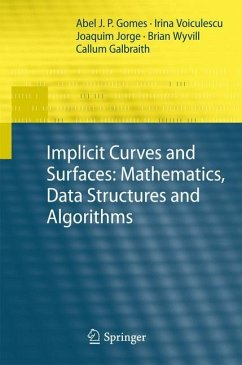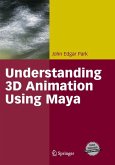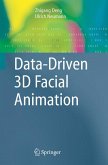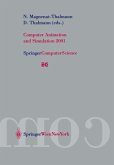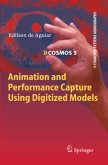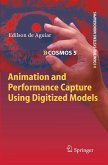Implicit objects have gained increasing importance in geometric modeling, visualisation, animation, and computer graphics, because their geometric properties provide a good alternative to traditional parametric objects. This book presents the mathematics, computational methods and data structures, as well as the algorithms needed to render implicit curves and surfaces, and shows how implicit objects can easily describe smooth, intricate, and articulatable shapes, and hence why they are being increasingly used in graphical applications.
Divided into two parts, the first introduces the mathematics of implicit curves and surfaces, as well as the data structures suited to store their sampled or discrete approximations, and the second deals with different computational methods for sampling implicit curves and surfaces, with particular reference to how these are applied to functions in 2D and 3D spaces.
Divided into two parts, the first introduces the mathematics of implicit curves and surfaces, as well as the data structures suited to store their sampled or discrete approximations, and the second deals with different computational methods for sampling implicit curves and surfaces, with particular reference to how these are applied to functions in 2D and 3D spaces.
From the reviews:
"The book does contain many algorithm examples and ... graphics examples, as well as a scattering of data structures but it would have benefited greatly from a chapter devoted entirely to graphics programming. ... A computer graphics specialist who needs to learn how to actually implement the various algorithms would need to look elsewhere. ... This book would be ideal as an introduction to the field for a beginning researcher, or for a graphics specialist who wants ... introductory information on a particular algorithm." (Alasdair McAndrew, ACM Computing Reviews, December, 2009)
"The book consist of eleven chapters organized in four parts and can be seen as a self-contained tool for graduate students, researchers, and interested practitioners from industry, regarding the usage of implicit curves and surfaces for computer graphics, geometric modelling, computer games etc. ... The book ends with a rich reference section containing more than 400 papers, enforcing the idea that this work represents a valuable source for the reader." (Mirel Cosulschi, Zentralblatt MATH, Vol. 1190, 2010)
"The book does contain many algorithm examples and ... graphics examples, as well as a scattering of data structures but it would have benefited greatly from a chapter devoted entirely to graphics programming. ... A computer graphics specialist who needs to learn how to actually implement the various algorithms would need to look elsewhere. ... This book would be ideal as an introduction to the field for a beginning researcher, or for a graphics specialist who wants ... introductory information on a particular algorithm." (Alasdair McAndrew, ACM Computing Reviews, December, 2009)
"The book consist of eleven chapters organized in four parts and can be seen as a self-contained tool for graduate students, researchers, and interested practitioners from industry, regarding the usage of implicit curves and surfaces for computer graphics, geometric modelling, computer games etc. ... The book ends with a rich reference section containing more than 400 papers, enforcing the idea that this work represents a valuable source for the reader." (Mirel Cosulschi, Zentralblatt MATH, Vol. 1190, 2010)

